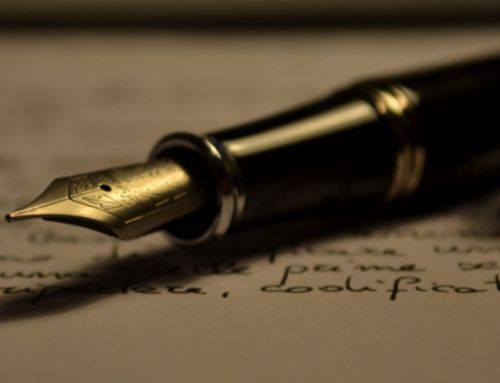By Beverly Hill.
There are any number of reasons you might consider selling an autograph and/or manuscript collection. Perhaps you have inherited a collection of letters and documents. You have no interest in keeping the collection and want to sell it for as much money as possible. Perhaps you decide to sell a collection which you have put together over a period of years. You have almost certainly bought some of the items in your collection from various auction houses and know which ones you are most comfortable dealing with as a buyer, but now you intend to become a consignor.
Regardless, there are some questions to ask so you can feel comfortable with the process of using an auction house and its procedures.
If you need money immediately, you may decide to sell your collection to a dealer. A dealer will normally offer half of the value of the collection because he needs to resell the items and make a profit. Not all dealers will be able to buy the entire collection but will want to “cherry pick” the more valuable items; this will make it more difficult for you to sell the other items in the collection. Try to keep the collection together, whether selling to a dealer or consigning to an auction house.
If you don’t need the money immediately, you may sell the collection through an auction house, where you have the possibility of making more profit. If your collection is very valuable, some auction houses will advance money to you from the expected auction proceeds.
Once you decide to go the route of an auction house to dispose of your collection, here are some suggestions and things to consider.
More time is involved with an auction house (this can vary from a couple of months to several). Auctions are scheduled for set dates and there is quite a lot of preparation involved. This includes writing catalog descriptions, photography, catalog production and mailing, and the publicity for the auction. All auction houses post their catalogs on line, which gives your items wide exposure.
Before choosing an auction house, ask among your friends if they have any experience dealing with auction houses, either good or bad. Go on line to see which auction houses have sold items similar to the ones you have. Auction results are posted on line so the results are available for viewing.
When looking at the list of results (prices realized), check at the top of the list to see if the prices listed are the actual sale (hammer) price or if the buyer’s premium has been added (an additional amount the buyer pays, on top of the sales price). If the buyer’s premium is included, subtract that percentage (usually 20-25%) to see what the actual sale price was. The actual sale price is the amount on which your results will be based and from which your seller’s commission will be subtracted. For example, if an item is posted as having sold for $1,200 but you see that the buyer’s premium was 20%, you
know that the hammer price for that item was $1,000. The consignor’s commission is deducted from the $1,000.
Contact a couple of auction houses and compare their answers before making a decision. Ask for the person in charge of manuscripts and give that person an idea of what you have. If he or she is interested, you will be asked for a list of the items in your collection so that the value can be assessed. Any information you have on provenance (from whom, when and for how much the items were bought) will be helpful and can increase the value.
Here are some questions you need to ask of the auction house before making a decision:
1. How much does the auction house think your collection is worth? The value of your consignment (whether it consists of one item or numerous items) will be determined by the auction house. If you don’t agree with the value set by the auction house, try another auction house. If the value given by the second auction house is in line with the value given by the first, you are probably overvaluing your items and should rethink what you expect to get. Sentiment often affects the value the potential consignor attributes to his or her items, but market value is determined by demand and rarity and by the economy. Just because you paid “x” amount for a document 20 years ago does not mean that the value has continued to increase. On the other hand, rare documents, such as a document signed by signer of the Declaration of Independence Button Gwinnett, can always be sold for top dollar. Remember that auction houses want your items to sell for as much as possible, because their profits are based on how much your items bring.
2. What commission do they charge? This is normally determined by the value of your consignment and will probably range from 15-30%. They may have a sliding commission rate, which means that you may be able to negotiate a lower rate for the higher value items in your consignment. “Higher value” varies according to the auction house; it could be $5,000 or $10,000, but always ask. Also, each auction house has a minimum consignment value which it will accept; this means the combined value of all of the items in your consignment.
3. Do they charge extra for photography, insurance, or anything else? If so, this will negatively affect the amount you will receive; you could wind up paying 40% of the price realized instead of 15 or 20%. Have everything spelled out in the contract so you don’t receive any surprises. Many auction houses do not charge for photography or insurance (meaning insurance from the time your consignment arrives at the auction house until it is shipped). Photographs are very important; without one, your lot may not sell because people often do not travel to the auction house for viewing and depend on the photographs. All auction houses put their catalogs on the internet, so even if an item is not considered valuable enough to have a photo in the printed catalog, make sure that all of your items will have a photo on their web site.
4. What protection do you have that your items won’t be sold for much less than they are worth? Many auction houses open the bidding at 50% or 60% of the low estimate and will not accept bids for less than this amount. While the hope is that your items will sell for more than 50 or 60% of the low estimate, this is a builtin guarantee that your items will not be “given” away. If you feel that you want to put reserves (a minimum amount you will accept) on certain items, ask the auction house how they handle this. Because of the labor intensive work which goes into preparing a consignment for auction, the auction house will probably charge you a buyin or buyback fee for unsold items which you have reserved; the fee varies, so ask. Let’s say that you have a 10% buyback fee written into your contract. You have placed a $1,000 reserve on an item and the item doesn’t sell, so you will have to pay the auction house 10% of the $1,000 reserve ($100) which you placed on that lot in order to get the lot back. If you had not placed a reserve on the lot and it had not sold, you would not have had to pay anything to get the lot back. If the auction house feels that you want to put unreasonable reserves on your items, it will probably refuse to take your consignment. On the other hand, if you have a very valuable item, you may be allowed to place a reserve on that item with no buyback fee; in other words, you pay nothing if the item does not sell.
5. What is the date of the auction at which your items will be sold? Do not give your consignment to an auction house that will not give you a specific date. The contract may say “on or about” a specific date because things do happen that cause an auction to be moved by a couple of weeks but you don’t want to leave your consignment with an auction house that constantly puts you off and keeps your items for months past the date you were given.
6. When is the settlement date for the auction to which you have consigned; in other words, when will you get paid? This varies but is usually around 30 business days after the date of the auction. You should get a detailed statement with your check, showing the amount each lot sold for and how much you received after your commission was deducted. Auction houses need to get paid before they can pay you, so if a buyer has not paid by the time you are supposed to get paid, you will not get paid until the buyer pays. From time to time, a buyer reneges; the auction house should return to you any items for which payment is not received. Ask how long the auction house waits before returning unsold items.
These are some of the basic questions to ask when dealing with any auction house. Auctions houses can be an excellent resource for disposing of a collection. Be prepared and you will find them a good option.
About the Author
Beverly Hill is a manuscript consultant. She was in the auction business from 1993-2015, most recently as director of manuscripts and collectibles for Goldberg Coins & Collectibles in Los Angeles (2002-2015). She served as vice president (2010-2012) and president (2012-2014) of the Manuscript Society. She can be reached at bhill@manuscript.org.
If you would like a copy of this article click the link below.



Leave A Comment